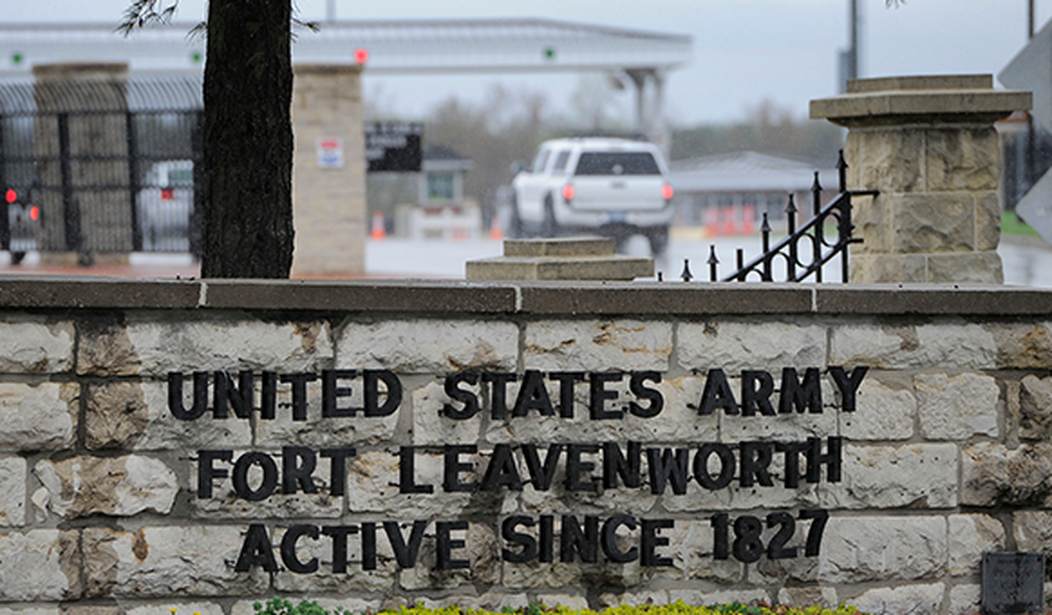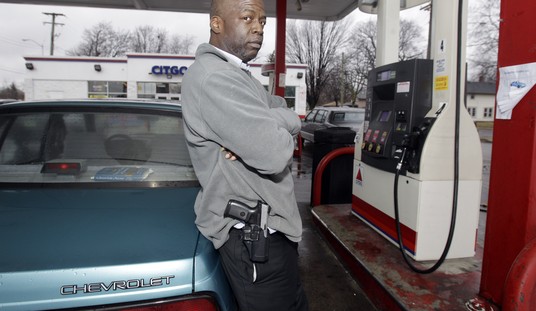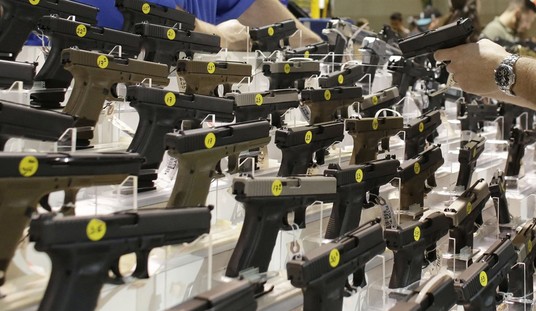AP Photo/Reed Hoffmann
I’m a veteran. I did my time in uniform, though it was in peacetime. I served and was honorably discharged in 1996. On 9/11, I watched with horror as a war I knew damn good and well was going to come. I considered reenlistment. I had some medical issues I’d need to get straight first, but my country was at war, and I wanted to contribute.
My wife felt differently, and because it wasn’t a decision I could make for my family, I decided not to pursue it. I had a two-month-old son at the time, and making a unilateral decision wouldn’t have been fair to her.
Why do I bring this up? Well, I do it so that people understand that I’m sympathetic to our men and women in uniform. This is important since I’m going to say something that will probably outrage some.
The military is made up of a lot of good, decent, honorable people. It also has its fair share of degenerates, thugs, bullies, and other undesirables. The military screening process keeps out some of those, but plenty more get in. They either haven’t done anything or haven’t been caught doing it, so the military has no reason not to accept them.
Then we can add in the civilian employees and contractors who also work on military bases into the mix. These, too, represent a cross-section of society. Many are good, hard workers, but some are absolute scumbags.
Kind of like the people 1LT Katie Blanchard had to deal with.
Alone in her office, Katie Blanchard saw him out of the corner of her eye.
It was Clifford Currie, a 54-year-old civilian employee who Blanchard supervised. She couldn’t yet see what was in his hands.
For months, Blanchard, then a first lieutenant, had warned her supervisors and coworkers that something would happen to her. She told them that Currie scared her. He would fly off the handle at a moment’s notice. He would yell and physically intimidate her.
She told them Currie was dangerous.
Then he did what she said he would.
Now, what he did was awful. Some of you may need to brace yourselves.
As Currie stood in the doorway of Blanchard’s second floor office at Munson Army Health Center, he pulled out a small clear bottle filled with a brown liquid. His eyes were glazed over and bloodshot as he doused her in gasoline.
Then he lit a pair of matches and threw them on the 26-year-old Army nurse, lighting her on fire.
Heinous and horrific.
There are those out there who would look at this case and say, “See? This happened on a military base. There are guns all over the place, and she was still brutally assaulted. What good do guns do to stop such things?”
However, that’s not entirely true.
Sure, there are guns all over the place, but guess who didn’t have one? Blanchard.
By summer, the situation had grown so dire that Blanchard went to the hospital’s head of security on Aug. 19, because she wanted to protect herself from Currie — her direct subordinate and someone she had to interact with on a daily basis. Blanchard, who has a concealed carry permit, told Task & Purpose that she wanted to know if she could bring her personal firearm with her to work, but was told she could not.
For those of you who haven’t served in the military, let that sink in. She was told she could not carry a firearm on base despite having a concealed carry permit and being a commissioned officer in the United States Army.
Veterans know that military bases are giant gun free zones. I know it sounds like an oxymoron to some, but unless you are required to carry a weapon in a duty capacity, you’re required to be disarmed. Now, that’s different than on deployment to warzones where all personnel is required to be armed at all times–talk about sending mixed signals to troops–but it’s the rule, and it has been for decades.
Bad things happen on military bases in part because there’s no way anyone can stop them from happening unless they’re on duty. The Department of Defense keeps personnel disarmed and vulnerable.
“Don’t they learn hand-to-hand combat?” some might ask. The answer is that there’s not nearly as much of that as lifelong civilians might think. I was in the Navy, where we didn’t even pretend to introduce unarmed combat. The Army and the Marine Corps do introduce the topics, but for many, it’s not reinforced all that often due to the lack of need. It’s optional and fairly open to military personnel–an Air Force friend of mine is a black belt in the Marine Corps Martial Arts Program (MCMAP), for example–but it’s also not a full solution.
After all, how was Blanchard supposed to put an armbar on the fire that burned her so badly?
The truth is, we treat our men and women in the military like criminals while on base. What’s worse is much like anywhere else, those inclined to have weapons will continue to have weapons. Even with barracks inspections, they’re unlikely to find those weapons. Inspections that delve into personal effects are relatively rare. Most inspections are to make sure everything is properly cleaned.
What was then known as “health & comfort” inspections would look into one’s personal belongings to make sure there was nothing harmful, but those could be worked around easily enough.
There was little to be done to keep weapons completely off of a base.
Yet, like everywhere else, those who are inclined to follow the rules are the ones to pay the penalty. First Lieutenant Blanchard paid those penalties. She was going to pay them anyway, but she followed the rules, and we see how that worked out for her.
She’s not the only one to pay that price, either.
Why do bad things happen on military bases? At least in part because our personnel, men and women charged with defending our freedom, aren’t allowed to carry the tools they need to protect their lives.
What part of that sounds right to you?








Join the conversation as a VIP Member